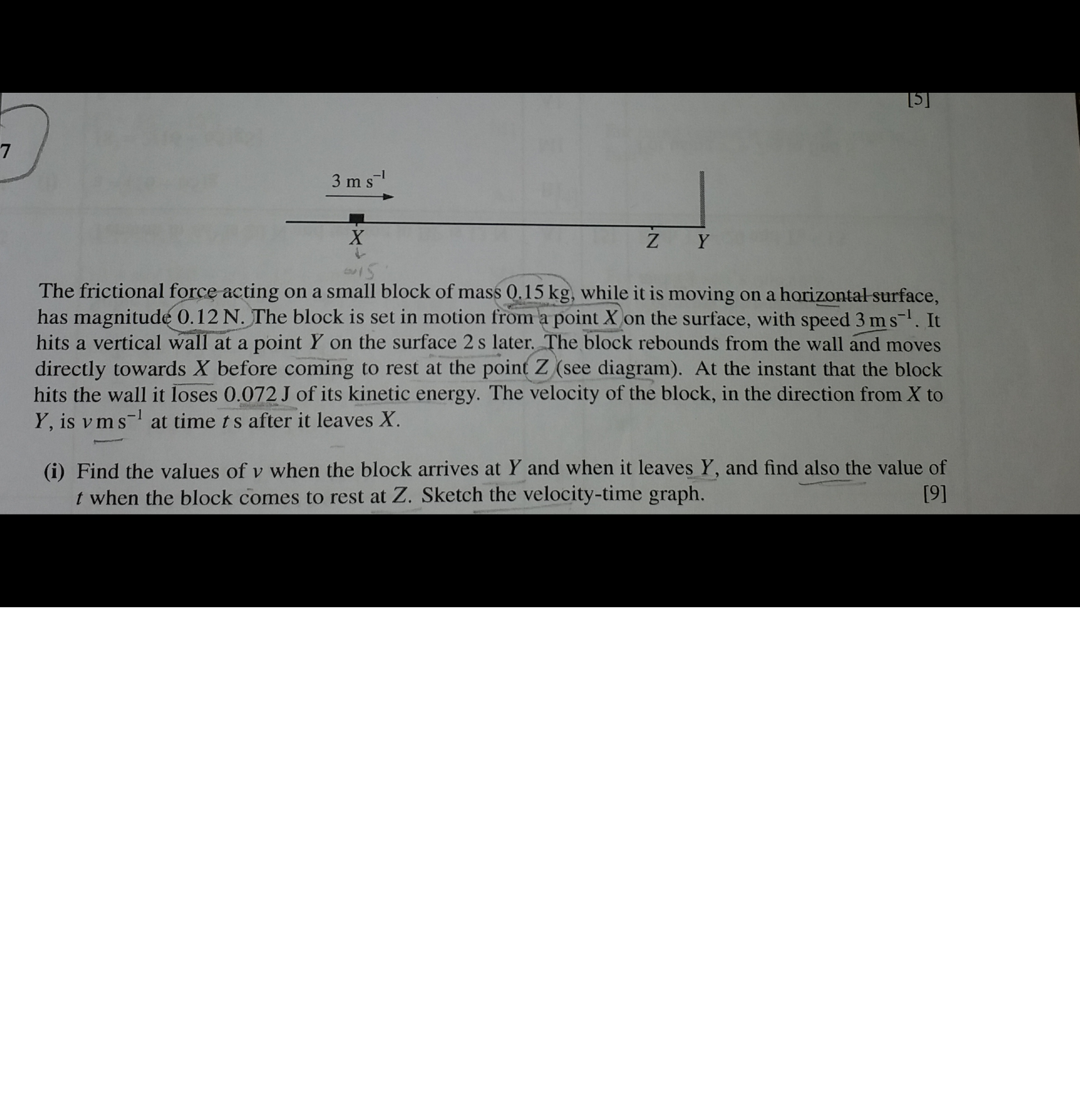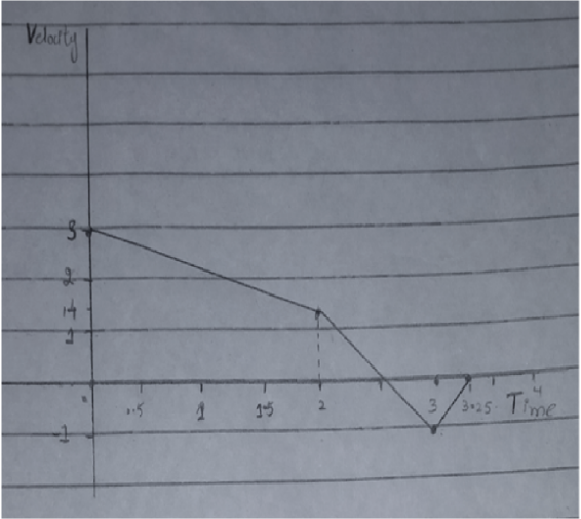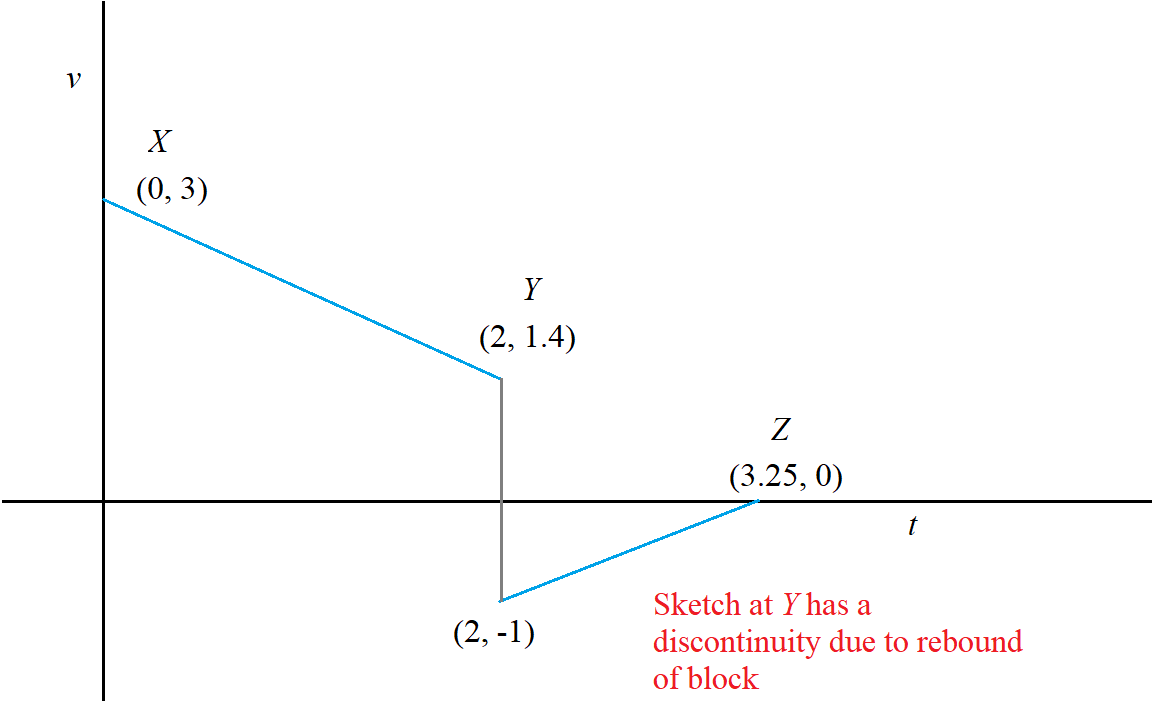Its question about velocity time graph?

~~~~~~~~~


~~~~~~~~~

1 Answer
Magnitude of Frictional force acting on the block
We know that force of friction always opposes motion. As such when the block moves from
#a=-F/m=(-0.12)/0.15=-0.8\ ms^-2#
To find the velocity
#v=u+at# ........(1)
Inserting given values we get
#v=3+(-0.8xx2)#
#v=1.4\ ms^-1# ......(2)
The block rebounds from the wall and moves directly towards
before coming to rest at the point
Kinetic energy as it his the wall
Kinetic energy lost on hitting the wall
Remaining kinetic energy on rebound
Velocity
#1/2mv_r^2=0.075#
#=>v_r=sqrt(2xx0.075/0.15)=+-1\ ms^-1#
Selecting negative root as now the velocity is in opposite direction of initial velocity.
#v_r=-1\ ms^-1# .......(3)
Time when block comes to rest at
We note that after rebound magnitude of frictional force remains same but its direction changes. Hence we have
#0=-1+0.8t#
#=>t=1/0.8=1.25\ s# ......(4)
Once we have acceleration, velocity, and time we can sketch the velocity-time graph as shown below.

